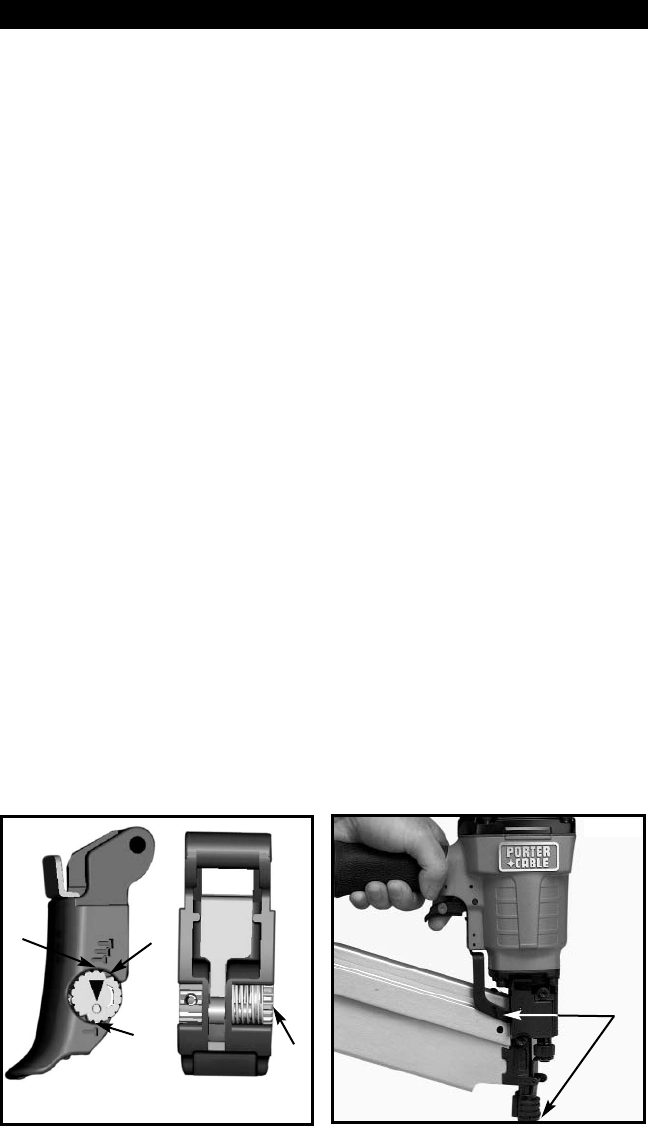
9
OPERATING INSTRUCTIONS
USING THE TOOL WITH SELECTABLE TRIGGERING
OPTIONS
Complete all steps of PREPARING THE TOOL before using the tool.
This tool is shipped from the factory with a selectable trigger set in the
“SINGLE SEQUENTIAL ACTUATION” firing mode as described in number
1 below. This actuation design requires the release of both the trigger and
safety mechanism after each fastener is driven. The selectable trigger can
be set for the “CONTACT ACTUATION” firing mode as described in
number 2 below. This actuation design requires the release of the safety
mechanism ONLY after each fastener is driven.
1. To use the tool in the SINGLE SEQUENTIAL ACTUATION MODE
depress trigger lever pivot pin (A) Fig. 24 and rotate it to position (B) and
release. Note: Trigger lever pivot pin is spring loaded and held in position by
locking tab (D) Fig. 24 to prevent movement during operation. To fire, grip
tool firmly to maintain control, position nose of tool onto work surface,
push the tool firmly against work surface to depress safety mechanism,
as shown at (S) Fig. 24A, and then squeeze trigger to fire a fastener.
Allow tool to recoil away from work surface as fastener is driven. This
“single sequential actuation” method provides the most accurate fastener
placement.
-OR-
2. To use the tool in the CONTACT ACTUATION MODE depress trigger
lever pivot pin (A) Fig. 24 and rotate it to position (C) and release. Note:
Trigger lever pivot pin is spring loaded and held in position by locking tab (D)
Fig.24 to prevent movement during operation. To fire, grip tool firmly to
maintain control, squeeze and hold trigger, push the tool firmly against
work surface to depress safety mechanism, as shown at (S) Fig. 24A,
and fire a fastener. Allow tool to recoil away from work surface as
fastener is driven. If safety mechanism is allowed to recontact work surface
before trigger is released an unwanted fastener will be fired. The tool will fire
a fastener each time the safety mechanism is depressed. This method is
known as “contact actuation” and allows very fast repetitive fastener
placement.
Fig. 24A
S
Fig. 24
A
B
C
D

















